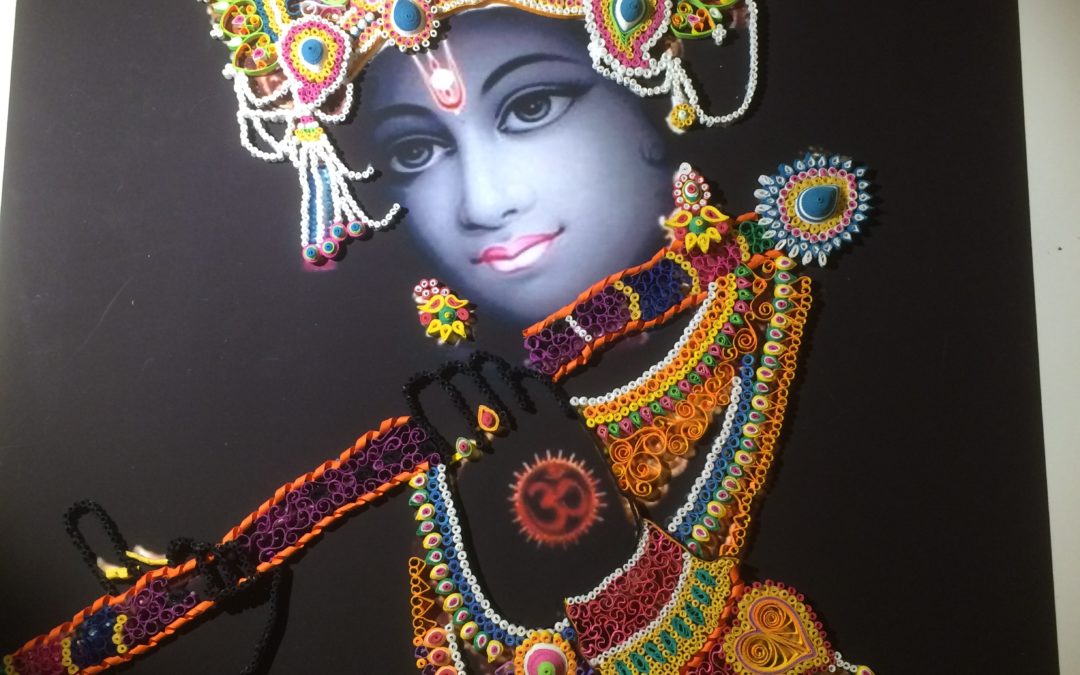Arjuna-viṣāda-yoga—
The Yoga of Arjuna’s Great Sorrow
The Gītā teaches us that all sorrow springs from misunderstanding the Reality of the world in which we live—taking the unreal as real and real as unreal. That which is permanent and unchanging is real and that which is impermanent and changing is non-real. The unreal never is; the real never ceases to be (2.16).
The Gītā says: Know the truth of your real Self, the reality of who you truly are. Know that you are neither your body nor your mind. You are the true Self which pervades the body, mind, and senses and enlivens them. This Self is imperishable, eternal, primeval, constant, and everlasting. Because the Self is formless, it is not confined to the boundaries of the body. It is limitless and all-pervading.
Our body, mind, senses, thoughts, feelings, sensations are constantly changing. They are impermanent and not really real. Not knowing their true nature as such and identifying with non-real is the source of all our delusion and suffering.
The Self is really real (satyasya satya) while the body, mind, senses etc. are only apparently real. The wise person, says the Gītā, does not get deluded about this (2.13).
Arjuna was unclear about this distinction. He took the seen to be real and unseen to be unreal— the common mistake we all make. He was oblivious to the reality of the Self and identified himself with the perishable names and forms. Hence, his sorrow and dejection (viṣāda).
Luckily, Arjuna had the benefit of Śrī Kṛṣṇa’s guidance. He had already accepted the Lord as the director of the chariot of his life (sārathī). Hence, with the guidance of Śrī Kṛṣṇa—the teacher Par Excellence—Arjuna was able to transform his sorrow into a means for Self-Realization.
This is the deeper significance of the first chapter, titled, ‘Arjuna-viṣāda-yogaḥ’—the yoga of Arjuna’s great sorrow.
We all go through sorrow and suffering in our life. Nobody can avoid the ‘slings and arrows of outrageous fortune,’ as Shakespeare puts it. They are part and parcel of human adventure called life. Life, it is said, is grind-stone. Whether it grinds us down or polishes us up depends upon us.
What can leaders learn from this?
First, leaders need to understand the context of their reality. Based on this understanding, they have to determine what really matters to them and to the organizations they are leading. Defining the reality of the context clearly will help avoid the tyranny of, what Peter Drucker calls, ‘solving wrong problems.’
Second, challenges are crucibles in which great leaders are forged. They furnish opportunities for self-reflection and self-transformation. Taken as denials and dejections, challenges degenerate into depression and sorrow.
Thirdly, when in a bind, leaders should not hesitate to seek guidance from those in the know. Humbly seeking help and acting steadfastly on it, they can transform a tragedy into a triumph.
From author’s forthcoming book, Bhagavad Gītā and Leadership: A Catalyst for Organizational Transformation (Palgrave MacMillan, New York, NY: 2017).


Recent Comments